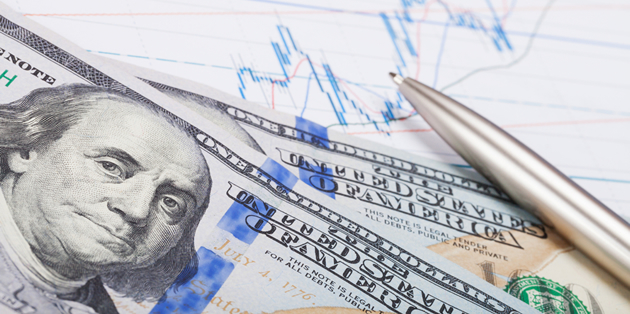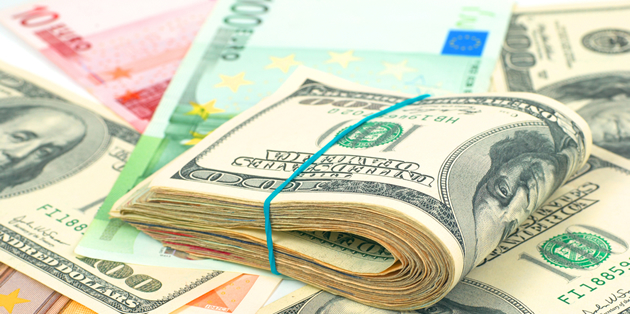Pound Sterling (GBP) Weakened in Anticipation of UK Employment Data
The Pound (GBP) trended lower against rivals on Wednesday morning, with investors lacking confidence ahead of the latest raft of UK employment data. Debate continued over the UK’s future in or out of the European Union, meanwhile, after a group of eight former US Treasury Secretaries warned that the country would be taking a ‘big risk’ in voting to leave the EU. Consequently the Pound Sterling to Euro (GBP/EUR) exchange rate was trending lower at 1.2659, while the Pound Sterling to US Dollar (GBP/USD) pairing was slumped in the region of 1.4377.
Although the UK’s average earnings figures were less-than-impressive, the Pound did manage to approach the close of the European session trending higher against the Euro, climbing 0.2% and achieving a high of 1.2711.
Earlier…
Stronger Eurozone Economic Confidence Failed to Dent GBP/EUR Exchange Rate
Despite the ZEW Economic Sentiment Surveys indicating that confidence in Germany and the Eurozone as a whole had improved in April the Euro (EUR) remained bearish on Tuesday. Largely this was due to the resumption of talks between Greece and its creditors, with speculation that the Hellenic nation could have to agree to additional austerity measures as a condition to debt relief. As a result the Pound Sterling to Euro (GBP/EUR) exchange rate ended the European session trending higher in the region of 1.2654.
Earlier…
- ‘Brexit’ worries weighed on GBP exchange rates
- Euro made gains ahead of ZEW Economic Sentiment Surveys
- Fed’s Dudley maintained dovish outlook, denting US Dollar
- UK employment data predicted to have limited impact due to ‘Brexit’ debate
‘Brexit’ Developments Continue to Drive Pound Sterling (GBP) Exchange Rates
Markets were not especially encouraged on Monday as Chancellor George Osborne unveiled a Treasury report into the potential impacts of a vote to leave the EU. Government analysis suggested that British households could be up to £4,300 worse off after a ‘Brexit’, with the UK economy at risk of being -6% smaller by 2030 than if it were to remain in the EU. While these figures were rapidly dismissed by members of the opposing campaign, investors were nevertheless inclined to move away from Pound Sterling (GBP) in response.
These loses were largely erased on Tuesday morning, however, after the latest phone opinion poll suggested a stronger lead for the ‘Remain’ camp. The news that support for the campaign to stay in the EU was apparently nine points higher than its opponents shored up confidence in the Pound, temporarily easing market fears.
The latest raft of UK employment data may provide further Sterling support on Wednesday, particularly as wage growth is expected to have strengthened in the three months to February. However, ‘Brexit’ uncertainty is likely to remain the primary driver of Pound movement, as James Knightley, Senior Economist at ING, noted:
‘Interest rates could go higher quite soon if the UK votes to stay an EU member, but we are likely to see rate cuts if the UK votes to leave. Given this theme is dominating market sentiment, even a really strong outcome from tomorrow’s jobs report is unlikely to have a significant impact on market pricing.’
Euro (EUR) Trends Higher in Advance of Eurozone Confidence Survey
Safe-haven demand, triggered by a sharp slump in the price of oil, bolstered the Euro (EUR) on Monday. This somewhat distracted investors from worries over the future of Greece’s bailout program, as creditors returned to the Hellenic nation to restart negotiations once again. With a speedy conclusion looking increasingly unlikely, due to entrenched disagreements over certain reforms and the possibility of debt relief, the outlook of the Greek economy remained uncertain.
As oil and commodities staged a strong recovery towards the end of Monday’s European session, however, the Pound Sterling to Euro (GBP/EUR) exchange rate climbed to a three-week high of 1.2648.
The single currency has been recovering ground ahead of the German and Eurozone ZEW Economic Sentiment Surveys for April. Forecasts suggest that economic confidence strengthened in the last month in line with the general recovery of global markets. Should sentiment have improved this would bode well for the latest European Central Bank (ECB) policy meeting, with stronger domestic data further decreasing the odds of additional easing from the central bank in the near future.
 Fed Dovishness Dented Demand for US Dollar, USD Exchange Rate Softened
Fed Dovishness Dented Demand for US Dollar, USD Exchange Rate Softened
A disappointing NAHB Housing Market Index and fresh commentary from Federal Open Market Committee (FOMC) vice-chairman William Dudley helped to dent the appeal of the US Dollar (USD) at the start of the week. Dudley reiterated the more dovish outlook of the FOMC, indicating that further monetary tightening is still envisioned as taking a gradual and cautious pace. Thus, in spite of a surge in safe-haven demand the Pound Sterling to US Dollar (GBP/USD) exchange rate saw a sharp uptrend on Monday afternoon.
The appeal of the ‘Greenback’ may remain muted on Tuesday if the latest US Housing Starts and Building Permits prove equally uninspiring. Signs of slowness within the domestic housing market are likely to further call into question the health of the world’s largest economy, further diminishing the odds of an imminent rate hike.
Current GBP, EUR, USD Exchange Rates
At the time of writing, the Pound Sterling to Euro (GBP/EUR) exchange rate was on an uptrend at 1.2641, while the Pound Sterling to US Dollar (GBP/USD) pairing was making gains around 1.4317. Meanwhile the Euro to US Dollar (EUR/USD) exchange rate was trending higher in the region of 1.1321.



